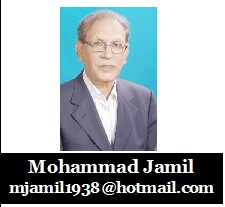 Debate is raging in Pakistan as to whether convicted leaders could issue statements and appeal to the people to stage demonstrations against the verdict of the court. Whenever, print or electronic media transgresses the law of the land, the government has the right to take action against them. On 10th July 2019, a global media watchdog ‘Reporters Without Borders (RSF)’ had slammed Pakistani authorities over the removal of three television channels from the country’s airwaves. However, the government said that no ban was placed and the TV channels remained off the airwaves due to technical reasons. Anyhow, TV channels should avoid airing the interviews of the criminals and those convicted by the court should not be glorified. Global media watchdog should know that apart from other laws Clause 4 (3) of the Pemra Code of Conduct bars airing of sub judice matters that tend to prejudice verdict by a court.
Debate is raging in Pakistan as to whether convicted leaders could issue statements and appeal to the people to stage demonstrations against the verdict of the court. Whenever, print or electronic media transgresses the law of the land, the government has the right to take action against them. On 10th July 2019, a global media watchdog ‘Reporters Without Borders (RSF)’ had slammed Pakistani authorities over the removal of three television channels from the country’s airwaves. However, the government said that no ban was placed and the TV channels remained off the airwaves due to technical reasons. Anyhow, TV channels should avoid airing the interviews of the criminals and those convicted by the court should not be glorified. Global media watchdog should know that apart from other laws Clause 4 (3) of the Pemra Code of Conduct bars airing of sub judice matters that tend to prejudice verdict by a court.
Nevertheless, such content is allowed to be aired if it is done in an informative and objective manner. In Pakistan, more often than not there has been running commentary of the proceedings in the cases against top politicians of the country, and panelists on the TV talk shows give their comments and opinions. The United Kingdom’s 1981 Contempt of Court Act also bars media publications that significantly discuss pending legal proceedings to the extent that justice is endangered to the point of influencing a court proceeding. In Pakistan, not only statements by the convicted are aired but propaganda is unleashed against the judiciary and the government. Recently, the nation witnessed the press briefing by the PML-N leaders that also showed the audio and video content meant to blackmail the judge. Anyhow, the matter is sub judice and the law will take its own course.
Continued on page 7
Continued from front page
In the international sphere, the European Court of Human Rights (ECHR) has tried a number of media-related incitement cases (e.g., TV channels and print platforms distributing suspects’, terrorists’ and criminals’ interviews for the public). In all these cases, the ECHR carefully examined on a case-by-case basis as to whether media reporting was done to glorify criminals/terrorists (e.g., by providing a platform for preaching hate and violence), or whether such reporting was done in spirit to inform the public at large about the perils of such ideology. In February, the Federal Investigation Agency (FIA) claimed to have put in place a monitoring system against those spreading extremism and hatred on social media and said, it would not wait for any complaint to take action against any individual or group, as legally it can take cognizance against anyone for committing such an offence.
Recently, a New York Times correspondent James Risen disclosed that some American newspaper of great repute regularly corroborate with the US government to thwart the reporting that top officials do not want to make public. Unfortunately, it happens only in the underdeveloped countries that media takes it as its insult to seek guideline or to get clearance from the government before publishing some sensitive story about strategic, security or other related issues. Incidentally, Pakistan tops the list of those states. Media houses in Pakistan do not consider it obligatory to be answerable for publishing any stuff which in fact should have not been in the print headlines or as scrolling tickers on the television screens. If the government or armed forces ask the media people not to publish some specific story or at least check before sending it to press, a large section of media propagates it as attack on press freedom.
Journalistic independence, write Kovach and Rosenstiel in their book “Elements of Journalism” that Journalism’s first obligation is to the truth. While editorialists and commentators are not neutral, the source of their credibility is still their accuracy, intellectual fairness and ability to inform – not their devotion to a certain group or outcome. The “journalistic truth” is a process that begins with the professional discipline of assembling and verifying facts. Then journalists try to convey a fair and reliable account of their meaning, subject to further investigation. Journalists should be as transparent as possible about sources and methods so that audiences can make their own assessment of the information. Conscientious journalists rely on a professional discipline for verifying information. While there is no standardized code as such, every journalist uses certain methods to assess and test information. This discipline of verification is what separates journalism from other forms of communication i.e. propaganda, advertising and fiction.
- Latest
- Trending


